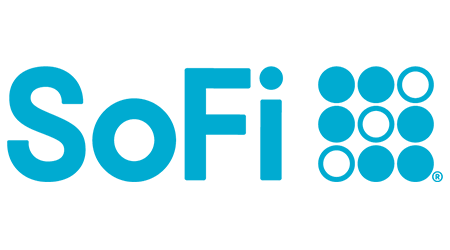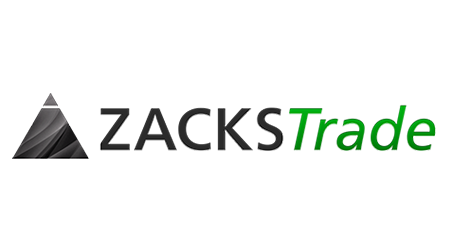
- Trade stocks, options, ETFs, mutual funds, alternative asset funds
- $0 commission on stocks, ETFs and options with no options contract fees
- Get up to $1,000 in stock when you open and fund a new account within 30 days
- Access to a financial planner
Johnson & Johnson (JNJ) is a leading drug manufacturers - general business based in the US. It opened the day at $151.28 after a previous close of $153.24. During the day the price has varied from a low of $147.40 to a high of $152.71. The latest price was $150.62 (25 minute delay). Johnson & Johnson is listed on the NYSE and employs 138,100 staff. All prices are listed in US Dollars.



We currently don't have that product, but here are others to consider:
How we picked theseThe Finder Score crunches 147 key metrics we collected directly from 18+ brokers and assessed each provider’s performance based on nine different categories, weighing each metric based on the expertise and insights of Finder’s investment experts. We then scored and ranked each provider to determine the best brokerage accounts.
We update our best picks as products change, disappear or emerge in the market. We also regularly review and revise our selections to ensure our best provider lists reflect the most competitive available.
Paid non-client promotion. Finder does not invest money with providers on this page. If a brand is a referral partner, we're paid when you click or tap through to, open an account with or provide your contact information to the provider. Partnerships are not a recommendation for you to invest with any one company. Learn more about how we make money.
Finder is not an advisor or brokerage service. Information on this page is for educational purposes only and not a recommendation to invest with any one company, trade specific stocks or fund specific investments. All editorial opinions are our own.
| 52-week range | $138.68 - $169.99 |
|---|---|
| 50-day moving average | $159.43 |
| 200-day moving average | $156.47 |
| Wall St. target price | $169.07 |
| PE ratio | 27.6028 |
| Dividend yield | $4.91 (3.19%) |
| Earnings per share (TTM) | $5.79 |
The technical analysis gauge below displays real-time ratings for the timeframes you select. This is not a recommendation, however. It represents a technical analysis based on the most popular technical indicators: Moving Averages, Oscillators and Pivots. Finder might not concur and takes no responsibility.
This chart is not advice or a guarantee of success. Rather, it gauges the real-time recommendations of three popular technical indicators: moving averages, oscillators and pivots. Finder is not responsible for how your stock performs.
Historical closes compared with the close of $150.62 from 2025-04-04
| 1 week (2025-04-01) | -1.72% |
|---|---|
| 1 month (2025-03-07) | -9.64% |
| 3 months (2025-01-08) | 5.87% |
| 6 months (2024-10-08) | -5.68% |
| 1 year (2024-04-08) | -0.64% |
|---|---|
| 2 years (2023-04-06) | -2.98% |
| 3 years (2022-04-08) | 166.6832 |
| 5 years (2020-04-08) | 20.98% |
Valuing Johnson & Johnson stock is incredibly difficult, and any metric has to be viewed as part of a bigger picture of Johnson & Johnson's overall performance. However, analysts commonly use some key metrics to help gauge the value of a stock.
Johnson & Johnson's current share price divided by its per-share earnings (EPS) over a 12-month period gives a "trailing price/earnings ratio" of roughly 28x. In other words, Johnson & Johnson shares trade at around 28x recent earnings.
That's comparable to, say, the trailing 12-month P/E ratio for the NASDAQ 100 at the end of 2019 (27.29).
Johnson & Johnson's "price/earnings-to-growth ratio" can be calculated by dividing its P/E ratio by its growth – to give 1.0852. A low ratio can be interpreted as meaning the shares offer better value, while a higher ratio can be interpreted as meaning the shares offer worse value.
The PEG ratio provides a broader view than just the P/E ratio, as it gives more insight into Johnson & Johnson's future profitability. By accounting for growth, it could also help you if you're comparing the share prices of multiple high-growth companies.
Johnson & Johnson's EBITDA (earnings before interest, taxes, depreciation and amortisation) is $29.9 billion.
The EBITDA is a measure of a Johnson & Johnson's overall financial performance and is widely used to measure a its profitability.
| Revenue TTM | $88.8 billion |
|---|---|
| Operating margin TTM | 18.15% |
| Gross profit TTM | $61.8 billion |
| Return on assets TTM | 8.13% |
| Return on equity TTM | 20.06% |
| Profit margin | 15.84% |
| Book value | $29.70 |
| Market Capitalization | $385.1 billion |
TTM: trailing 12 months
Environmental, social and governance (known as ESG) criteria are a set of three factors used to measure the sustainability and social impact of companies like Johnson & Johnson.
When it comes to ESG scores, lower is better, and lower scores are generally associated with lower risk for would-be investors.
Total ESG risk: 35.8
Socially conscious investors use ESG scores to screen how an investment aligns with their worldview, and Johnson & Johnson's overall score of 35.8 (as at 12/31/2018) is pretty weak – landing it in it in the 72nd percentile of companies rated in the same sector.
ESG scores are increasingly used to estimate the level of risk a company like Johnson & Johnson is exposed to within the areas of "environmental" (carbon footprint, resource use etc.), "social" (health and safety, human rights etc.), and "governance" (anti-corruption, tax transparency etc.).
Environmental score: 3.79/100
Johnson & Johnson's environmental score of 3.79 puts it squarely in the 7th percentile of companies rated in the same sector. This could suggest that Johnson & Johnson is a leader in its sector terms of its environmental impact, and exposed to a lower level of risk.
Social score: 25.14/100
Johnson & Johnson's social score of 25.14 puts it squarely in the 7th percentile of companies rated in the same sector. This could suggest that Johnson & Johnson is a leader in its sector when it comes to taking good care of its workforce and the communities it impacts.
Governance score: 14.87/100
Johnson & Johnson's governance score puts it squarely in the 7th percentile of companies rated in the same sector. That could suggest that Johnson & Johnson is a leader in its sector when it comes to responsible management and strategy, and exposed to a lower level of risk.
Controversy score: 4/5
ESG scores also evaluate any incidences of controversy that a company has been involved in. Johnson & Johnson scored a 4 out of 5 for controversy – the second-lowest score possible, reflecting that Johnson & Johnson has a damaged public profile.
Johnson & Johnson was last rated for ESG on: 2019-01-01.
| Total ESG score | 35.8 |
|---|---|
| Total ESG percentile | 72.38 |
| Environmental score | 3.79 |
| Environmental score percentile | 7 |
| Social score | 25.14 |
| Social score percentile | 7 |
| Governance score | 14.87 |
| Governance score percentile | 7 |
| Level of controversy | 4 |
Dividend payout ratio: 49.65% of net profits
Recently Johnson & Johnson has paid out, on average, around 0% of net profits as dividends. That has enabled analysts to estimate a "forward annual dividend yield" of 0% of the current stock value. This means that over a year, based on recent payouts (which are sadly no guarantee of future payouts), Johnson & Johnson shareholders could enjoy a 0% return on their shares, in the form of dividend payments. In Johnson & Johnson's case, that would currently equate to about $4.91 per share.
While Johnson & Johnson's payout ratio might seem fairly standard, it's worth remembering that Johnson & Johnson may be investing much of the rest of its net profits in future growth.
Johnson & Johnson's most recent dividend payout was on 3 March 2025. The latest dividend was paid out to all shareholders who bought their shares by 17 February 2025 (the "ex-dividend date").
Johnson & Johnson's shares were split on a 2:1 basis on 12 June 2001 . So if you had owned 1 share the day before before the split, the next day you'd have owned 2 shares. This wouldn't directly have changed the overall worth of your Johnson & Johnson shares – just the quantity. However, indirectly, the new 50% lower share price could have impacted the market appetite for Johnson & Johnson shares which in turn could have impacted Johnson & Johnson's share price.
Over the last 12 months, Johnson & Johnson's shares have ranged in value from as little as $138.681 up to $169.99. A popular way to gauge a stock's volatility is its "beta".
Beta is a measure of a share's volatility in relation to the market. The market (NYSE average) beta is 1, while Johnson & Johnson's is 0.48. This would suggest that Johnson & Johnson's shares are less volatile than average (for this exchange).
Johnson & Johnson, together with its subsidiaries, engages in the research and development, manufacture, and sale of various products in the healthcare field worldwide. It operates in two segments, Innovative Medicine and MedTech. The Innovative Medicine segment offers products for various therapeutic areas, such as immunology, including rheumatoid arthritis, psoriatic arthritis, inflammatory bowel disease, and psoriasis; infectious diseases comprising HIV/AIDS; neuroscience, consisting of mood disorders, neurodegenerative disorders, and schizophrenia; oncology, such as prostate cancer, hematologic malignancies, lung cancer, and bladder cancer; cardiovascular and metabolism, including thrombosis, diabetes, and macular degeneration; and pulmonary hypertension comprising pulmonary arterial hypertension through retailers, wholesalers, distributors, hospitals, and healthcare professionals for prescription use. The MedTech segment provides electrophysiology products to treat heart rhythm disorders; the heart recovery portfolio, which includes technologies to treat severe coronary artery disease requiring high-risk PCI or AMI cardiogenic shock; circulatory restoration products for the treatment of calcified coronary artery and peripheral artery diseases; and neurovascular care that treats hemorrhagic and ischemic stroke. This segment offers an orthopaedics portfolio that includes products and enabling technologies that support hips, knees, trauma, spine, sports, and other; surgery portfolios comprising advanced and general surgery technologies, as well as solutions for breast aesthetics and reconstruction; contact lenses under the ACUVUE brand; and TECNIS intraocular lenses for cataract surgery. It distributes its products to wholesalers, hospitals, and retailers, as well as physicians, nurses, hospitals, eye care professionals, and clinics. The company was founded in 1886 and is based in New Brunswick, New Jersey.
Steps to owning and managing MRK, with 24-hour and historical pricing before you buy.
Steps to owning and managing LLY, with 24-hour and historical pricing before you buy.
Steps to owning and managing ISRG, with 24-hour and historical pricing before you buy.
Steps to owning and managing VRTX, with 24-hour and historical pricing before you buy.
Steps to owning and managing MCK, with 24-hour and historical pricing before you buy.
Steps to owning and managing UNH, with 24-hour and historical pricing before you buy.
Steps to owning and managing AMGN, with 24-hour and historical pricing before you buy.
Steps to owning and managing ABT, with 24-hour and historical pricing before you buy.
Steps to owning and managing PFE, with 24-hour and historical pricing before you buy.